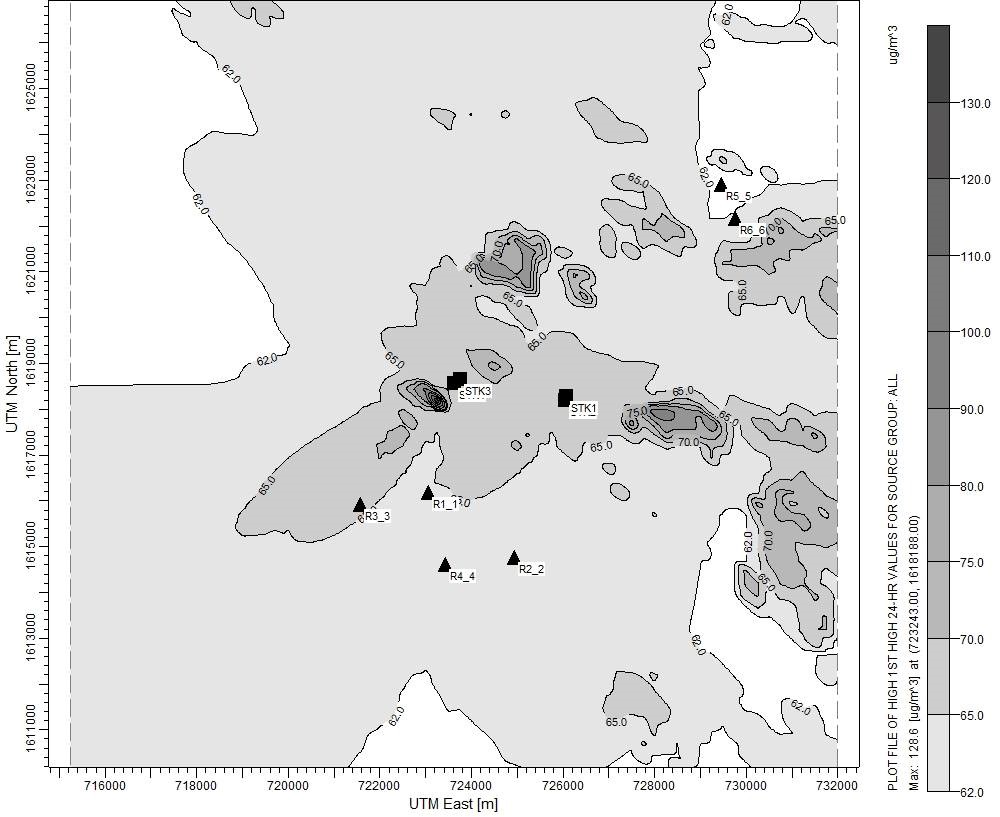Effect of the Waste Heat Recovery System to Buoyancy and Momentum Flux of Combustion Stack in the Cement Industry
Main Article Content
Abstract
Buoyancy and momentum fluxes are important parameters to determine the plume rise which is related to the ability to dilute air pollutants emitted from combustion stack sources. The change of temperature due to waste heat recovery directly affects these fluxes. This study analyzed buoyancy and momentum fluxes and evaluated the ground level concentration of PM-10 prior and after implementation of waste heat recovery in the area surrounding one of the largest cement production plants in Thailand. The results showed that the ambient temperature was the significant parameter affecting buoyancy and momentum fluxes. The buoyancy flux was found to be the dominant force to the rise of plume for both scenarios. There were no differences in the predicted PM-10 ground level concentrations at receptors around the cement plant for the model simulation under two scenarios. Therefore, it was concluded that decreasing of stack gas exit temperature does not affect the dispersion of air pollutants in the cement industry.
Article Details
Published articles are under the copyright of the Environment and Natural Resources Journal effective when the article is accepted for publication thus granting Environment and Natural Resources Journal all rights for the work so that both parties may be protected from the consequences of unauthorized use. Partially or totally publication of an article elsewhere is possible only after the consent from the editors.
References
2. Bhargava A. Effect of wind speed and stack height on plume rise using different equations. International Journal of Engineering Science and Computing 2016;6(4):3228-34.
3. Brook RD, Rajagopalan S, Pope CA III, Brook JR, Bhatnagar A, Diez-Roux AV, et al. Particulate matter air pollution and cardiovascular disease: an update to the scientific statement from the American Heart Association. Circulation 2010;121(21):2331-78.
4. Cao J, Yang C, Li J, Chen R, Chen B, Gu D, Kan H. Association between long-term exposure to outdoor air pollution and mortality in China: a cohort study. Journal of Hazardous Materials 2011;186(2-3):1594-600.
5. Chaurasia S, Ahmed I, Gupta AD, Kumar S. Assessment of air pollution emission from cement industries in Nimbahera, India. International Journal of Current Microbiology and Applied Sciences 2014;3(3):133-9.
6. Demirkaya G, Padilla RV, Goswami DY. A review of combined power and cooling cycles. Wiley Interdisciplinary Reviews: Energy and Environment 2013;2(5):534-47.
7. Dimmick WF, Wehe AH. 41 - Technology and costing of air pollution abatement1 A2 -Holgate. In: Maynard R, Holgate S, Koren H, Samet J, Maynard R, editors. Air Pollution and Health. London: Academic Press; 1999. p. 931-45.
8. El-Gazar MM, Tawfik BBS. Analysis of the factors affecting the distribution of chimney emissions to the atmosphere - simulation approach. International Journal of Computer Science Engineering and Information Technology Research 2013;2(2):367-78.
9. Essa KSM, Mubarak F, Elsaid SEM. Effect of the plume rise and wind speed on extreme value of air pollutant concentration. Meteorology and Atmospheric Physics 2006;93(3):247-53.
10. Fang H, Xia J, Zhu K, Su Y, Jiang Y. Industrial waste heat utilization for low temperature district heating. Energy Policy 2013;62(Supplement C):236-46.
11. Gupta RK, Majumdar D, Trivedi JV, Bhanarkar AD. Particulate matter and elemental emissions from a cement kiln. Fuel Processing Technology 2012;104 (Supplement C):343-51.
12. Hoven IVD. Effects of time and height on behavior of emissions. Environmental Health Perspectives 1975;10:207-10.
13. Ilaboya IR, Atikpo E, Umukoro L, Omufuma FE, Ezugwa MO. Analysis of the effects of mixing height and other associated factors on the effective dispersion of plume. Iranica Journal of Energy and Environment 2011;2(2):153-60.
14. Kampa M, Castanas E. Human health effects of air pollution. Environmental Pollution 2008;151(2):362-7.
15. Lakes Environmental. Screen View 4.0.0 edition. Ontario, Canada: Lakes Environmental Software; 2011.
16. Liu H, Fang C, Zhang X, Wang Z, Bao C, Li F. The effect of natural and anthropogenic factors on haze pollution in Chinese cities: a spatial econometrics approach. Journal of Cleaner Production 2017;165(Supplement C):323-33.
17. Madlool NA, Saidur R, Hossain MS, Rahim NA. A critical review on energy use and savings in the cement industries. Renewable and Sustainable Energy Reviews 2011;15(4):2042-60.
18. Madlool NA, Saidur R, Rahim NA, Kamalisarvestani M. An overview of energy savings measures for cement industries. Renewable and Sustainable Energy Reviews 2013;19(Supplement C):18-29.
19. Masters GM. Introduction of Environemntal Engineering and Sciecne. Prentice Hall, USA; 1997.
20. Parvez F, Lamancusa C, Wagstrom K. Primary and secondary particulate matter intake fraction from different height emission sources. Atmospheric Environment 2017;165(Supplement C):1-11.
21. Thai Cement Manufacturers Association (TCMA). TCMA 2016. Thailand: Thai Cement Manufacturers Association; 2016.
22. Thai Meteorological Department (TMD). Season of Thailand [Internet]. 2018 [cited Jun 2018]. Available from: https://www.tmd.go.th/info/info.php?FileID=23
23. Turner DB. Workbook of Atmospheric Dispersion Estimates. U.S. Environmental Protection Agency; USA; 1970.
24. United States Department of Energy. Waste Heat Recovery: Technology and Opportunities in U.S. Industry. Industrial Technologies Program, U.S. Department of Energy. United State; 2008.
25. United States Environmental Protection Agency (USEPA). SCREEN3 model User’s Guide. EPA-454/B-95-004, U.S. Environmental Protection Agency; USA; 1995a.
26. United State Environmental Protection Agency (USEPA). User's Guide for the Industrial Source Complex (ISC3) Dispersion Models. Volume II - Description of Model Algorithms. North Carolina; 1995b.
27. United State Environmental Protection Agency (USEPA). User’s Guide for the AMS/EPA Regulatory Model (AERMOD). Research Triangle Park, North Carolina; 2018.
28. Vallero D. Air pollution control technologies. In: Vallero D, editor. Fundamentals of Air Pollution (5th edition). Boston: Academic Press; 2014. p. 829-79.
